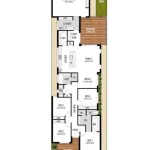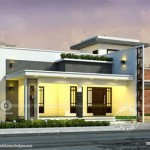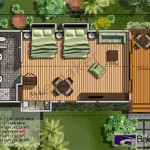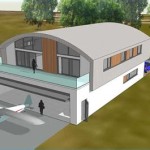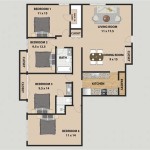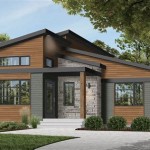The White House: A Detailed Exploration of Its Iconic Floor Plan
The White House, the official residence of the President of the United States, is a sprawling masterpiece of architecture and historical significance. Its intricate floor plan reflects the grandeur and functionality required to accommodate the nation's highest office. Join us on a virtual tour as we delve into the essential aspects of the White House layout.
Ground Floor: The Public's Entrance
The ground floor serves as the primary entry point for visitors and serves various public functions. It encompasses the grand East Room, renowned for hosting state dinners and receptions, as well as the elegant Green Room and Blue Room, used for official events and meetings. The Diplomatic Reception Room, adorned with exquisite chandeliers and tapestries, hosts foreign dignitaries.
First Floor: The President's Residence
Ascend to the first floor, where the private quarters of the First Family reside. The Oval Office, the President's primary workspace, features panoramic views and a decor that reflects the current administration's preferences. The Treaty Room, the Cabinet Room, and the Map Room serve as venues for important meetings and strategic discussions.
Second Floor: Guest Quarters and Family Spaces
The second floor accommodates guest bedrooms for visiting heads of state and other dignitaries. It also features the Queen's Bedroom, a tribute to Queen Victoria's gift of a canopied bed, and the Lincoln Bedroom, where President Lincoln is said to have slept. This floor also includes the family dining room and living room, providing a private sanctuary for the First Family.
Lower Ground Floor: The Service Areas
The lower ground floor houses the operational aspects of the White House. The kitchen, with its state-of-the-art facilities, serves as a culinary hub for official events and family meals. The laundry facility, housekeeping offices, and maintenance rooms ensure the smooth running of the residence.
State Dining Room: A Culinary Showcase
The State Dining Room, located on the ground floor, is a magnificent setting for official dinners and receptions. It accommodates up to 140 guests and features elaborate chandeliers, gilded moldings, and a dramatic centerpiece. The room has witnessed countless historic events and symbolizes the nation's diplomatic and social grandeur.
West Wing and East Wing: Administration Centers
Connected to the main building are the West Wing and East Wing, which house offices and staff of the President and First Lady, respectively. The West Wing, renowned for its iconic colonnade, accommodates the Situation Room, the center of national security decision-making, and the press briefing room.
Conclusion
The White House floor plan is a testament to its historical significance, architectural prowess, and functional design. From the public grandeur of the East Room to the private sanctuary of the second floor, each space reflects the multifaceted nature of the President's role and the demands of running a nation. Whether you visit in person or explore it virtually, the White House remains an iconic symbol of American democracy and a testament to its enduring legacy.
Photos Show The White House Interior Where Naomi Biden Got Married

The White House Museum Interactive Map And Many Pictures Information Tour Dc Interior
Photos Show The White House Interior Where Naomi Biden Got Married

First Floor White House Museum Tour Plans

The White House Archisyllogy
Photos Show The White House Interior Where Naomi Biden Got Married

Whitehouse Layout White House Plans Tour Floor

Here Are West Wing S Close Quarters As Workers Test Positive Cnn Politics

Plan Of The Second Floor White House Library Congress

Inside The Iconic Oval Office

